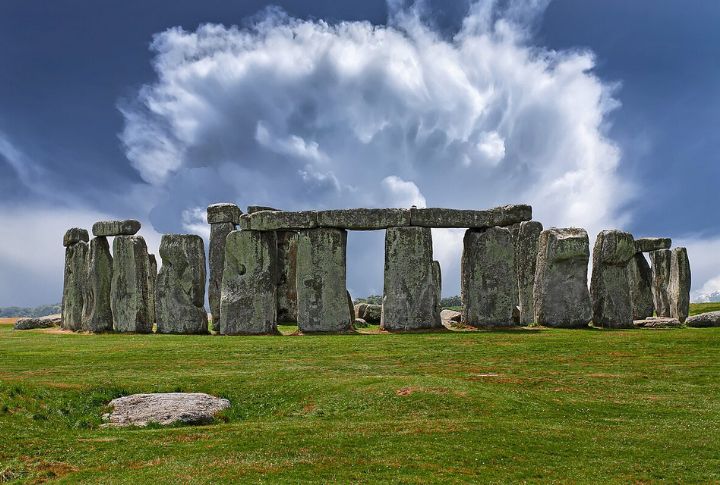
The world is filled with mysterious structures that seem too advanced, too precise, or too bizarre to be the work of humans—at least according to those with their eyes on the skies. While archaeologists and historians offer grounded explanations, some can’t help but wonder if extraterrestrial hands had a role to play. So, here are 20 sites and structures that continue to spark alien speculation.
Great Pyramid Of Giza, Egypt
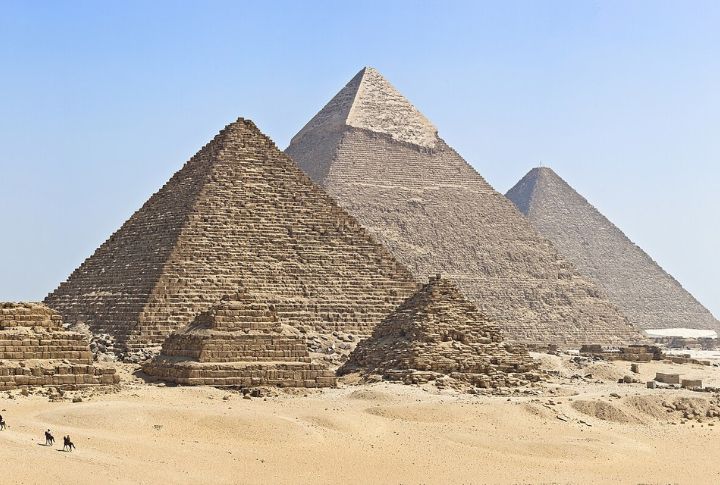
The Great Pyramid of Giza has engaged humanity for centuries with its perfect alignment to cardinal points and unexplained construction methods. The pyramid held the title of the tallest man-made structure for over 3,800 years. What baffles researchers is the precision with which the blocks—each weighing up to 15 tons—were cut and transported, especially without modern machinery.
Stonehenge, England
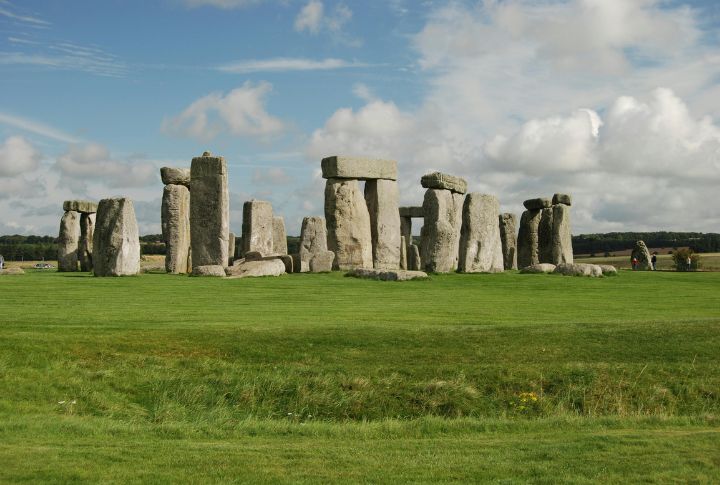
Stonehenge, located on Salisbury Plain, is one of the world’s most enigmatic prehistoric monuments. This ancient circle of stones, some weighing over 25 tons, was constructed around 4,000 years ago. Its alignment with the solstices has led researchers to theorize it served as an astronomical observatory or a site for religious rituals.
Moai Statues Of Easter Island, Chile
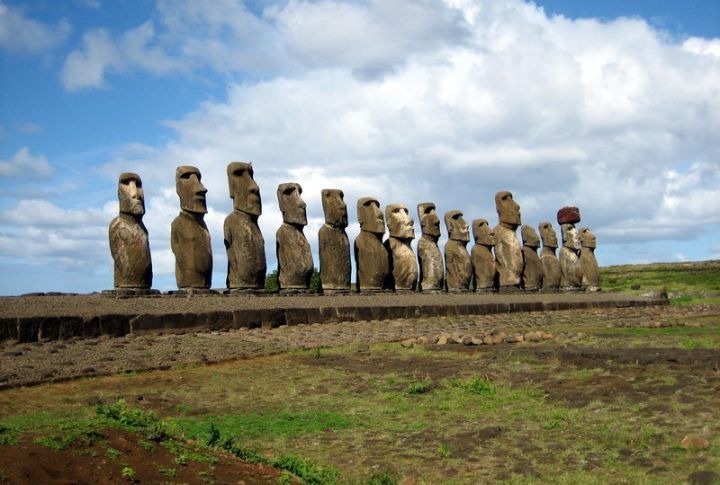
Over 800 Moai statues (some towering 30 feet tall) dot this remote island. Alien theorists find the statues fascinating due to their sheer scale and the logistics required to move them. While most researchers attribute the feat to human ingenuity and rope-and-sled techniques, the statues’ stoic faces and enigmatic presence keep alien speculation alive.
Nazca Lines, Peru
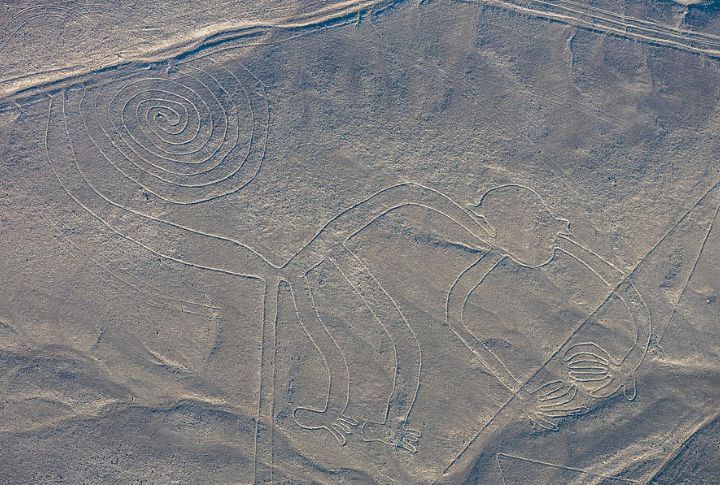
The sprawling Nazca Lines stretch across Peru’s desert, depicting animals and shapes best seen from above—except no one knows exactly why they were made. Some say they were paths for ceremonies, while others think they were giant “hello” signs for extraterrestrials. Whatever the reason, these mysterious drawings still have everyone scratching their heads.
Pumapunku, Bolivia
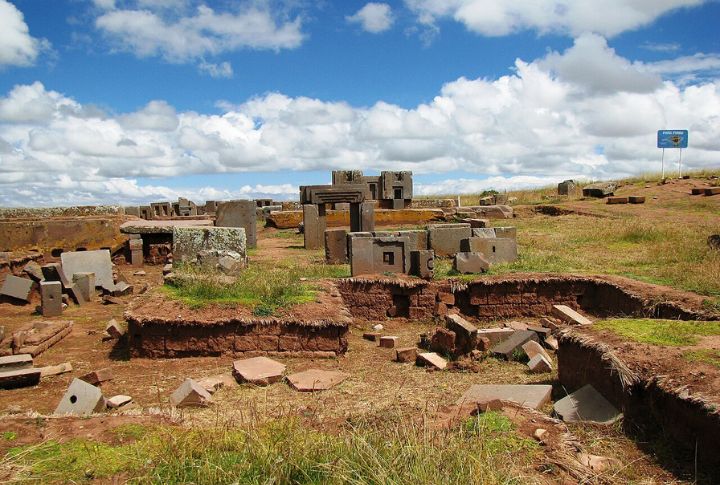
At Pumapunku, huge stone blocks fit together so precisely that not even a blade fits between them. Some stones weigh over 100 tons, and their transportation without modern tools baffles researchers. Alien enthusiasts point to the site’s precise geometry and advanced construction techniques as possible evidence of extraterrestrial assistance.
Teotihuacan, Mexico

Teotihuacan is also known as the “City of the Gods” and is an ancient metropolis in Mexico. It features pyramids like the Pyramid of the Sun and the Pyramid of the Moon, perfectly aligned with celestial events. Plus, the city’s advanced urban planning, including complex drainage systems, raises questions about the knowledge and techniques of its creators.
Baalbek, Lebanon

Ever tried lifting something that weighs as much as a jumbo jet? At Baalbek, ancient builders didn’t just lift—they moved and stacked stones weighing over 800 tons like it was no big deal. The Trilithon stones, part of the Temple of Jupiter, are so big that even modern engineering marvels struggle to explain their precise placement.
Machu Picchu, Peru
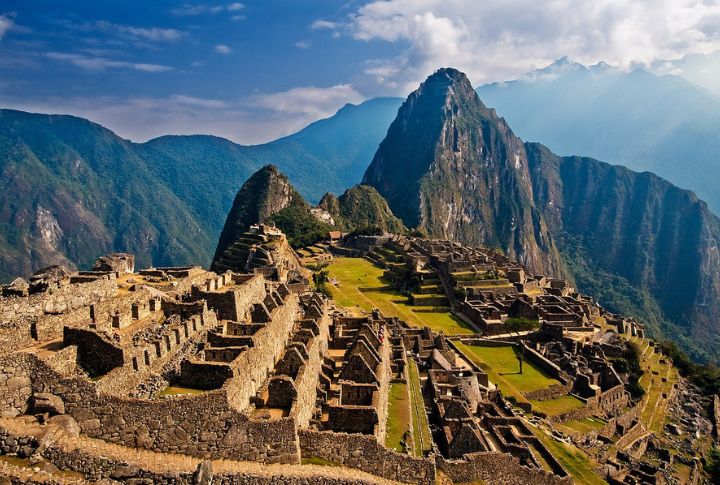
Perched high in the Andes, Machu Picchu feels like a destination that’s out of this world—literally. The precision of its construction, with stones so perfectly cut and fitted that no mortar was needed, has baffled experts for decades. Add in the site’s location on a remote mountain ridge, and you’ve got a recipe for alien theories.
Chichen Itza, Mexico
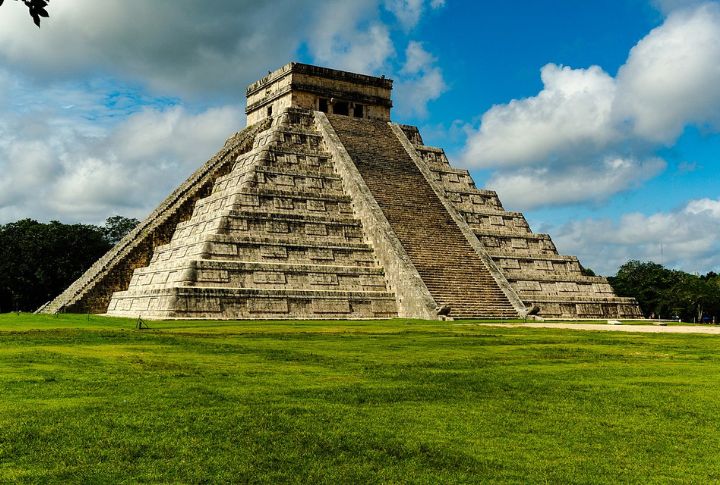
Chichén Itzá is a cosmic enigma. The Mayan city’s iconic El Castillo, or the Temple of Kukulcán, is designed with such astronomical precision that it aligns perfectly with the equinoxes. Here, twice a year, shadows create the illusion of a serpent moving down the steps of the pyramid, a feat of both artistry and science.
Tikal, Guatemala
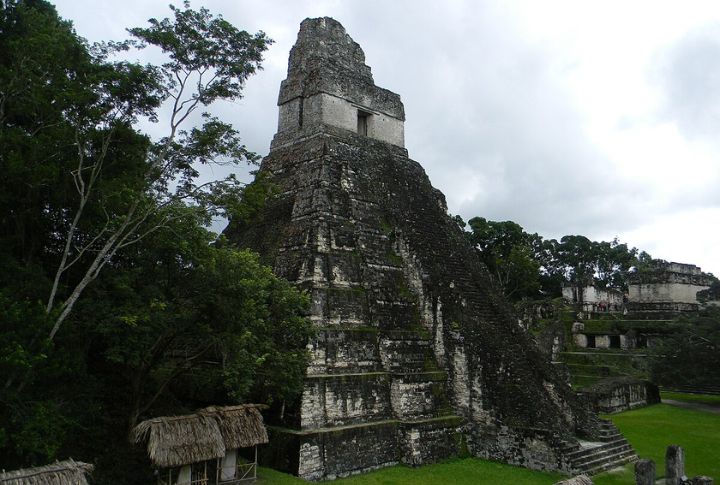
This ancient Mayan metropolis is home to towering pyramids that pierce the canopy, with the Temple of the Great Jaguar standing at 154 feet tall. The city’s layout aligns with celestial events, suggesting an advanced understanding of astronomy. But how did the Maya achieve such architectural precision? Some speculate that extraterrestrial influences guided their knowledge.
Great Zimbabwe, Zimbabwe
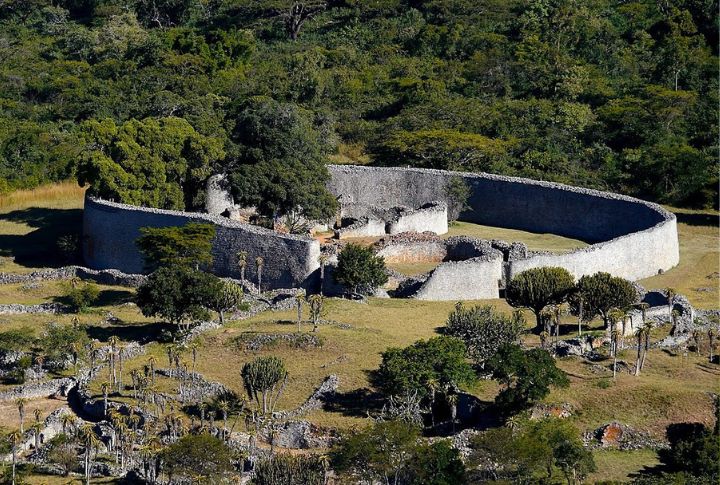
Great Zimbabwe, the largest ancient structure south of the Sahara, showcases extraordinary craftsmanship from the 11th to 15th centuries. Its stone walls, built without mortar, are carefully stacked granite blocks that remain standing centuries later. Covering nearly 1,800 acres, the complex served as a royal palace and trading hub.
Newgrange, Ireland
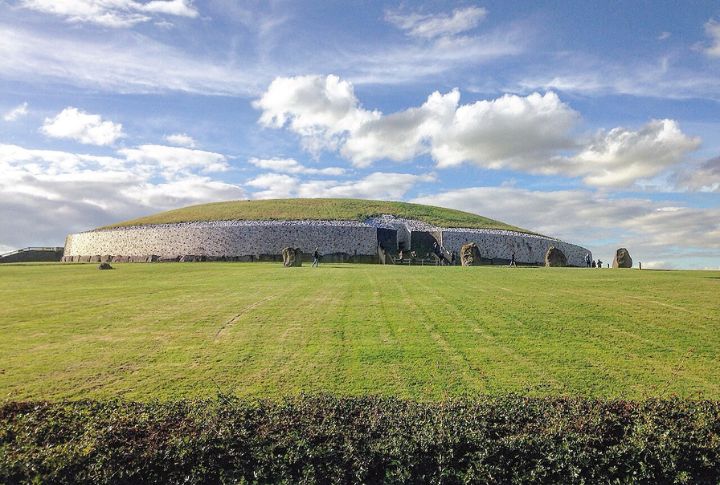
Beneath Ireland’s rolling hills lies Newgrange, a Neolithic masterpiece older than the pyramids. Every winter solstice, sunlight streams through its narrow passage to illuminate the inner chamber. Intricate carvings of spirals and motifs on the stones add to the mystery, leaving many to ponder how such precision and symbolism came to be.
Sacsayhuamán, Peru
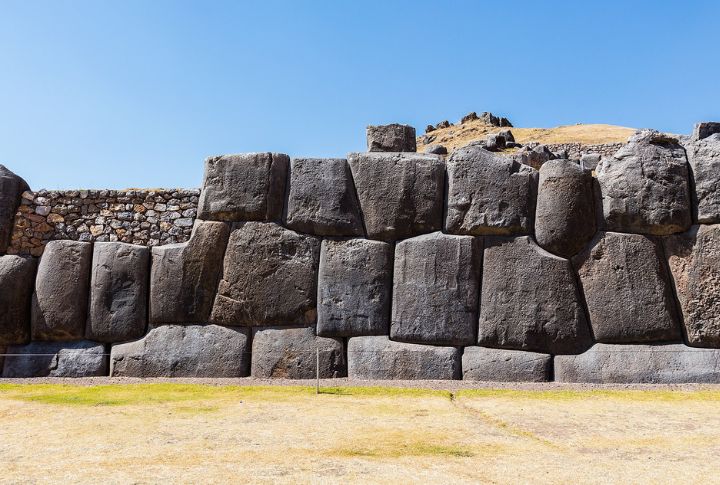
Each limestone block of Sacsayhuamán weighs up to 200 tons, yet they fit together so well that not even a blade of grass can slip through the seams. What’s even more baffling is that these stones were transported from quarries miles away. The precision of this structure has led some to speculate that extraterrestrial assistance played a role in its construction.
Derinkuyu Underground City, Turkey
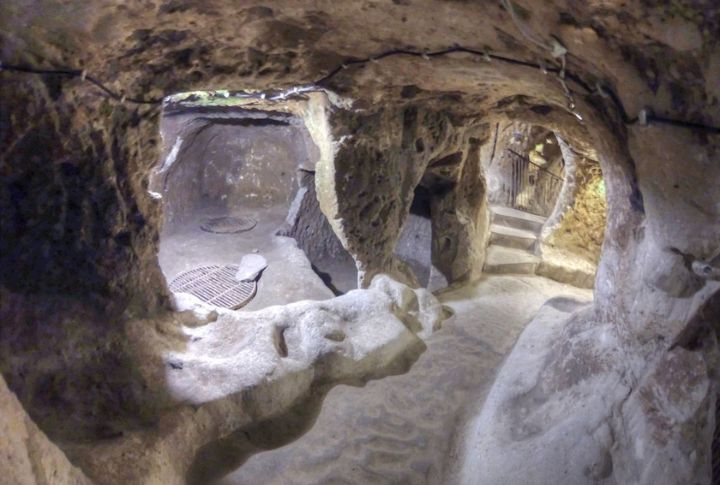
Derinkuyu is a labyrinthine underground city stretching 200 feet deep with over 18 levels of tunnels. This ancient refuge housed up to 20,000 people and included living quarters, storage rooms, wineries, ventilation systems, and a church. While scholars believe it was built during the Byzantine era to protect from invaders, its sheer complexity raises eyebrows.
Petra, Jordan
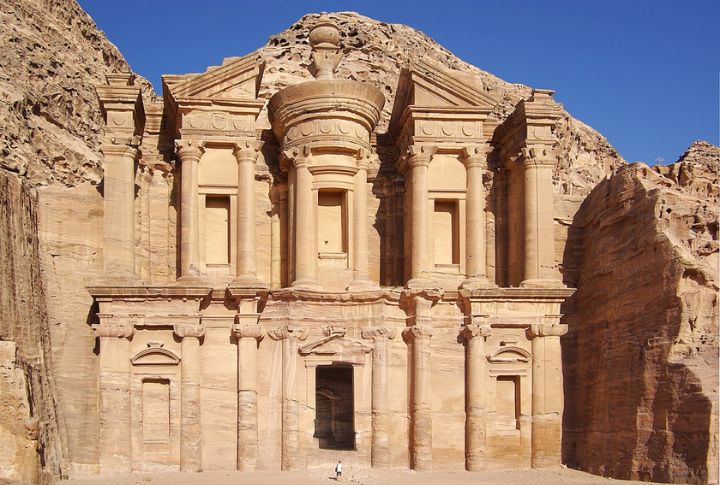
Dating back to the Nabataean civilization over 2,000 years ago, this UNESCO World Heritage Site is known for its elaborate rock-cut architecture, including the iconic Al-Khazneh, or Treasury. Petra’s engineering feats are just as impressive. The mix of beauty, mystery, and unparalleled craftsmanship keeps Petra firmly in the spotlight of both archaeological and extraterrestrial debates.
Angkor Wat, Cambodia

Angkor Wat is considered the largest religious site in the world. The scale of the project, combined with the mathematical accuracy of its layout, leaves many wondering how such a feat was accomplished with the tools of the time. Alien enthusiasts argue extraterrestrials provided the knowledge needed to create such architectural perfection.
Terracotta Army, China
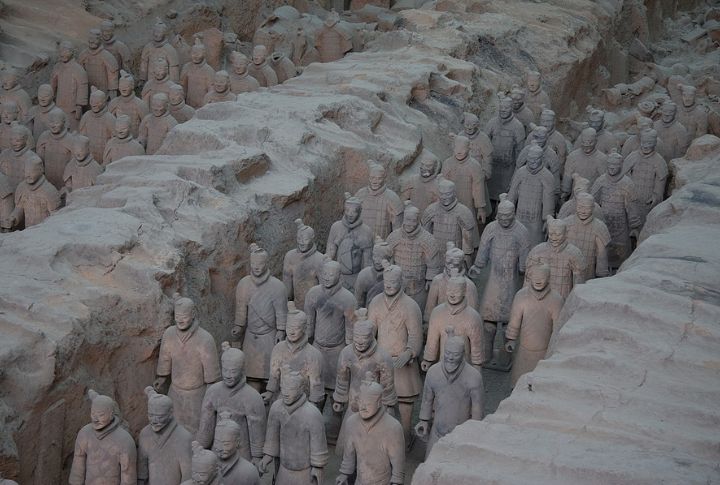
The Terracotta Army, created in 210 BCE, includes over 8,000 life-sized soldiers, each uniquely detailed. The precision of their design, the intricate detailing, and the vast scale of the undertaking are awe-inspiring. Moreover, advanced techniques, such as assembly-line production and the use of anti-corrosion coatings, seem far ahead of their time.
Carnac Stones, France
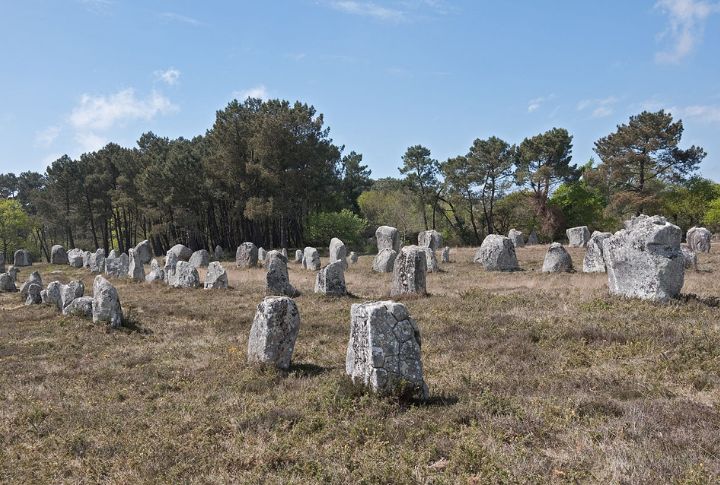
The Carnac Stones in Brittany, France, form one of the world’s most mysterious prehistoric sites. The purpose of these stones remains unknown, though theories range from astronomical observatories to ceremonial sites. The sheer scale and purpose of Carnac have led to speculation about extraterrestrial involvement, making it a hotspot for alien theories.
The Bimini Road, Bahamas

The Bimini Road, submerged off the coast of the Bahamas, has fueled speculation for decades. This underwater formation consists of massive limestone blocks arranged in a straight line, resembling an ancient road or wall. Measuring nearly half a mile long, divers have reported finding smaller stone tools near the site, adding to the intrigue.
Göbekli Tepe, Turkey
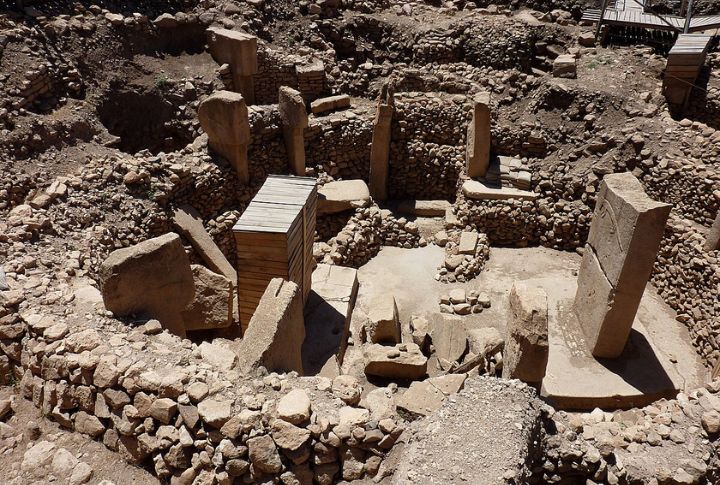
Göbekli Tepe is often called the world’s first temple, and for good reason. This 12,000-year-old site predates Stonehenge by thousands of years and features T-shaped pillars, some weighing up to 20 tons. Intricate carvings of animals and abstract symbols adorn the stones, sparking debates about their purpose.

